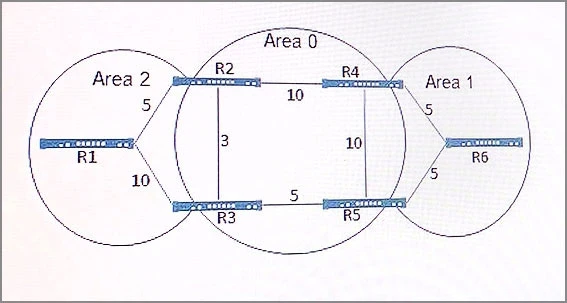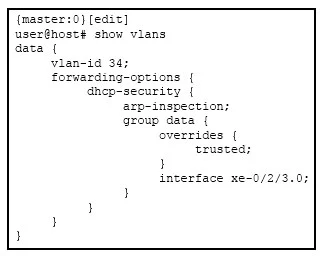
A routing table contains multiple BGP routes to the same destination prefix. The route preference is the same for each route.
Referring to the exhibit, which route would be selected?

The selection of a BGP route follows several criteria in a specific order. Firstly, the route with the highest local preference is preferred. Both Route B and Route D have the same local preference of 150. Next, the origin code is considered, where 'I' (IGP) is more preferred over '?' (Incomplete). Since Route D has an origin code of 'I' and Route B has an undefined origin code, Route D is the preferred route.

In the exhibit, the costs are labeled on the links between routers. To determine the path R6 will take to reach R1, we need to compare the total costs of each path. If R6 takes the path R6 > R4 > R2 > R1 (Option A), the total cost will be 5 (R6 to R4) + 10 (R4 to R2) + 5 (R2 to R1) = 20. Option D follows the path R6 > R5 > R3 > R2 > R1 with a total cost of 5 (R6 to R5) + 5 (R5 to R3) + 3 (R3 to R2) + 5 (R2 to R1) = 18. Since 18 is less than 20, the path with the lowest cost from R6 to R1 is via R6 > R5 > R3 > R2 > R1, making D the correct answer.

In this scenario, the packet is forwarded and no error message is logged. The interface xe-0/2/3.0 is marked as trusted in the configuration. DHCP snooping typically inspects packets on untrusted interfaces. Since the packet arrives on a trusted interface, it will be forwarded without error.